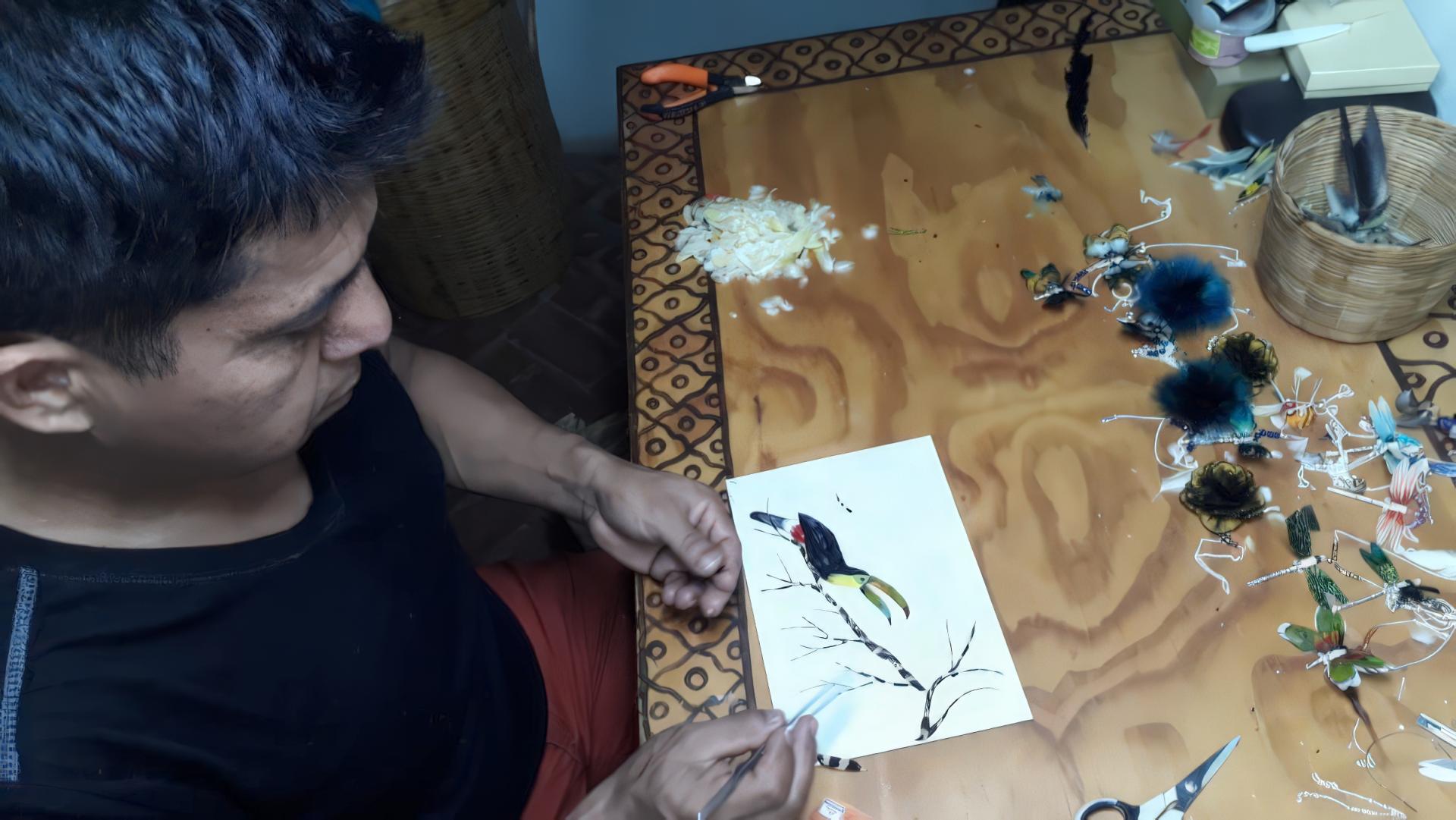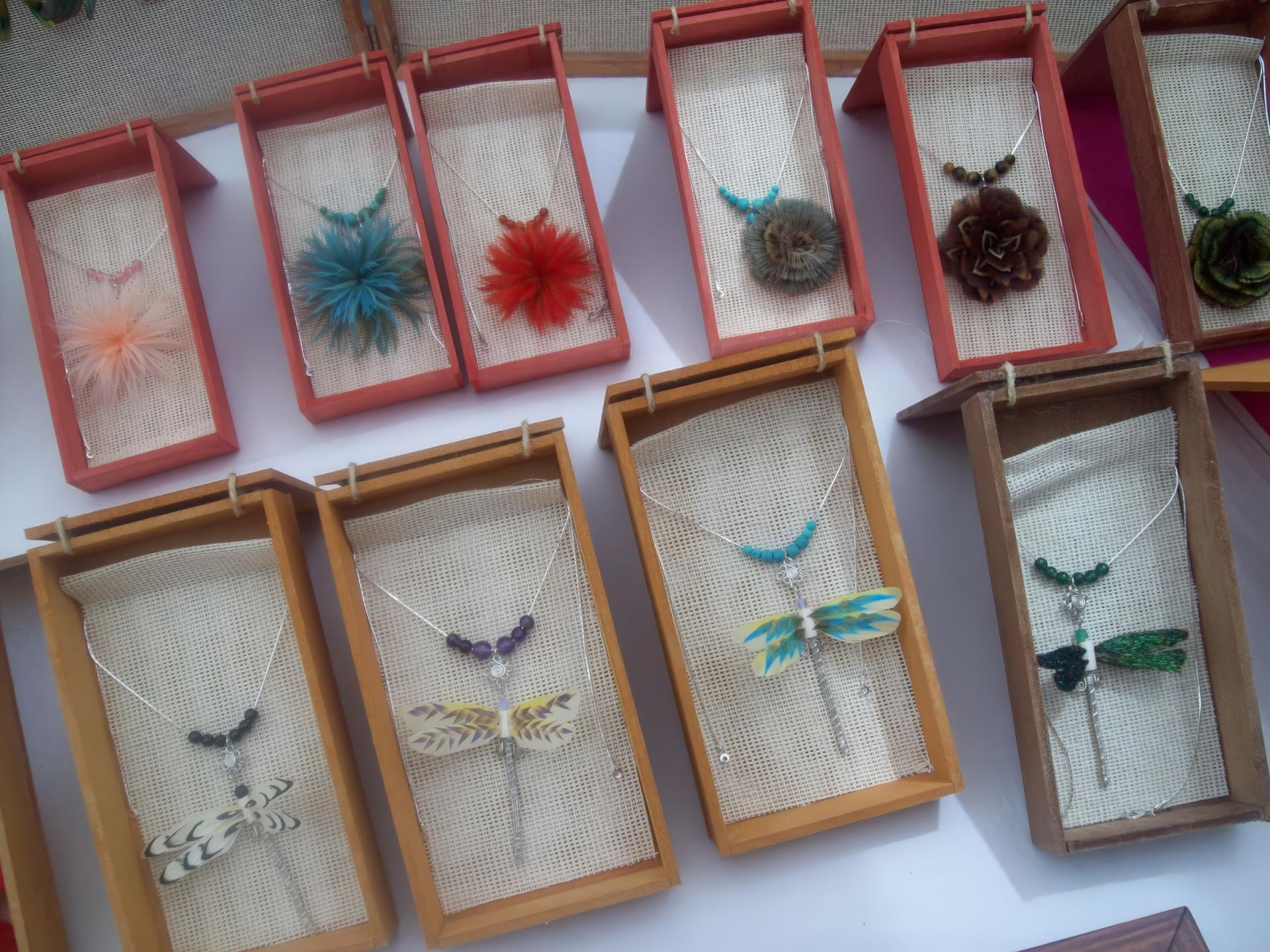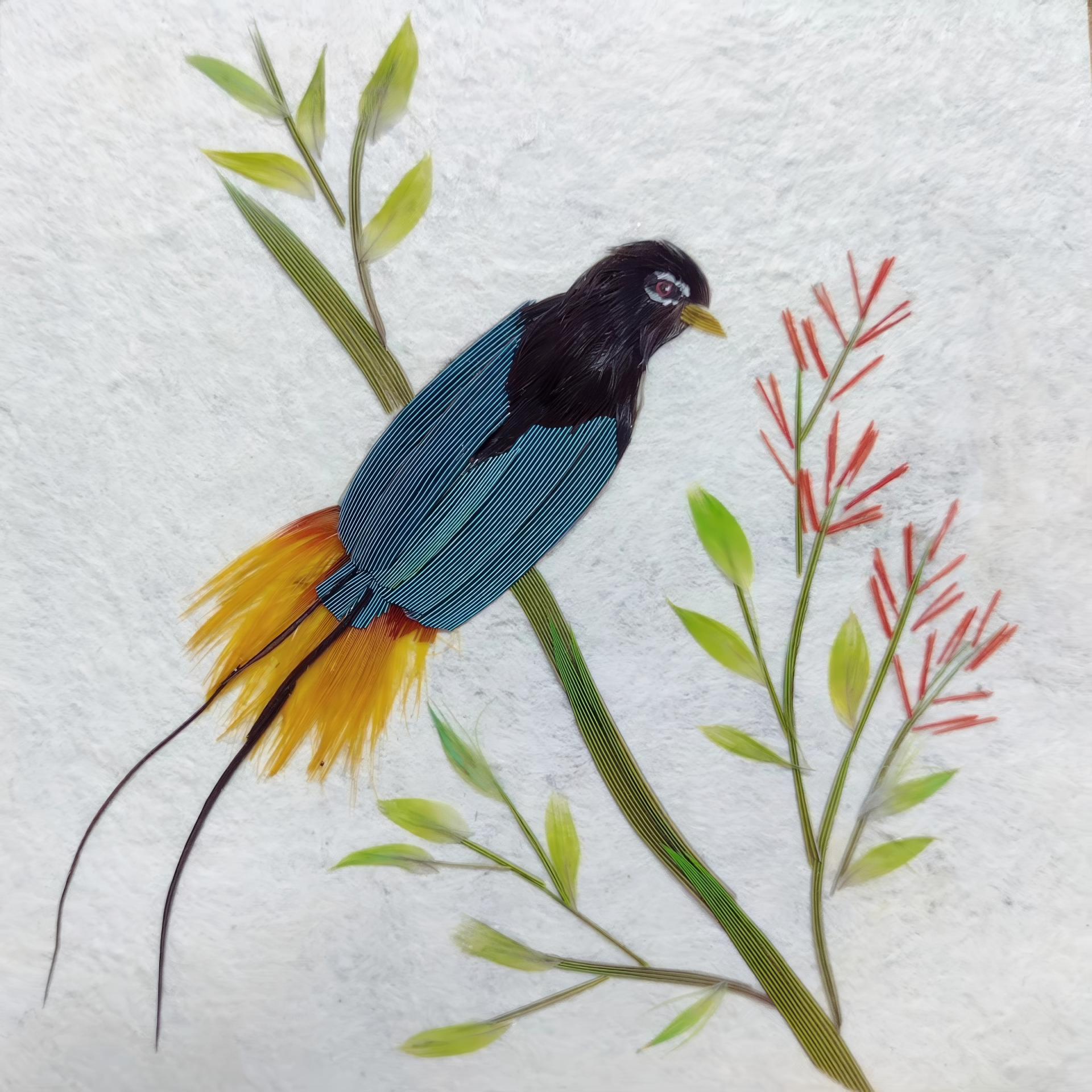
Rubén Flores Apaez (Nahua) was born in the state of Guerrero, Mexico, in a community called Cuahuilotla. He and his family emigrated to the state of Morelos when Flores was five years old. “Since I was a child, I have always appreciated and admired birds. I remember the first ones in the corral and some wild ones singing with their color and brightness in their feathers,” he recalls. At the age of 22, Flores joined a traditional Aztec and Mexica dance group in Cuernavaca, Morelos, which opened the door for him to feather art. “It all started 25 years ago when I was learning traditional dance. I started making pieces for the exclusive use of dance and for our group. Over time, I mastered the [glue] pen, and I created other ornamental pieces that could be used by anyone. As a person who likes feathers, after investigating the techniques and materials that were formerly used in Mexico, I began to create more elaborate pieces such as landscapes or people with feathers,” he says.

Rubén Flores in his workshop.
For more than 18 years, Flores has been working with Gastón Aguilar as part of Arte Plumario Kozamalotl. “Our current focus in our work is mainly the representation of birds. We have had the opportunity to participate in different events in Mexico. In the beginning, we participated in some contests and obtained awards and recognitions. We have had the opportunity to show our art in Guatemala, Italy, and, in recent years, in some places in the United States. Our work gives continuity and promotes an art that refuses to be lost. With crafts, we express our feelings and ways of perceiving life, and they are also sources of income for our families,” he says. Feathers have been used by many Indigenous cultures around the world for ceremonial, ritual, and traditional purposes. Flores says his work represents “The taste for birds and their plumage; the continuity of an art that was highly appreciated and admired in Mexico and that few of us keep alive, in each piece, the delicacy, the fragility of the feather, and at the same time, the beauty that can be obtained. Each creation, whether decorative or utilitarian, represents an entire heritage and tradition with the work of the pen that has been worked for centuries in Mexico.”

Jewelry made out of plumage by Arte Plumario Kozamalotl.
The feathers for Arte Plumario Kozamalotl’s work are acquired from certified aviaries in Morelos and Quintana Roo. “All of the feathers used are collected during natural feather change,” he says. “Other parts are from our birds that we raise at home; their feathers are also collected as they are shed by the birds.” The feathers are used to make jewelry such as earrings and necklaces, paintings, and cutouts. “Although there are few of us who work on this art in Mexico, we each have our own techniques and works. Our work has been differentiated by using feathers in natural and collected colors. We make small pieces with details, such as jewelry. Then we give it a special touch and complement it with silver and real stones,” Flores says.
As many Indigenous artists do, Flores and Aguilar face several challenges, such as lack of access to basic services, healthcare, transportation, and security. Specifically, he cites “being able to properly promote our work, getting pens easily, the lack of communication when we go abroad due to not mastering English, and the lack of funds to be able to go out to certain events.” Undeterred by these obstacles, Flores says it gives him “great pride to be able to show his feather artwork at events like the Cultural Survival Bazaars and participate in this ancient art.” He believes there are increasing numbers of people learning about this artform and, through the art, they learn about the change of plumage of all birds. “Though bird feathers may be something that many other people discard or ignore, for me, they are art and something that can give life to our creations.”

All photos courtesy of Rubén Flores.
Join us at the Summer Bazaars and Shop Indigenous!
July 20 & 21, 2024 Newburyport, MA
July 27 & 28, 2024 Tiverton, RI
